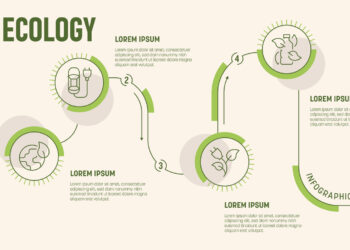With Open Access Week soon to be upon us, this seems like a good time to review how the OA world has evolved and where it is going. By my count we are well along in the third phase of open access publishing, with phase four rapidly coming into view. Of course, not everybody will accept a four-part typology, and they shouldn’t. Perhaps there are five stages, or ten. Or perhaps there is but one, which is continuously and inexorably unfolding. Call this the Calvinist Corollary: research literature that is free and accessible to one and all was predestined when God created the world. Her plan could be seen even in the earliest eukaryotic cells if only one looked closely enough. From this vantage, advocates of subscription-based publishing models seem to be walking on their knuckles while the upright Citizens of the International Research Community lead us to the fulfillment of Her plan. Typologies reflect a worldview, and mine is simply that tools are useful when they further our understanding and should be tossed out when they do not. I am prepared to jettison this taxonomy the moment Stage Five swims into view.

Meanwhile, those of us who have not caught the idealist contagion observe that things have changed since Stevan Harnad first nailed his “subversive proposal” to the church door. Harnad, in my view, belongs to the first stage, the Age of the Activists, who got the ball rolling. The Activists were idealists who saw in digital technology a means to subvert the restrictions of what they termed “toll-access publishing,” a form of publishing (so they argued) that was based on the scarcity model of print. Now, this is entirely untrue (publishing has nothing to do with paper), but it matters little: innovations can take place as much by misreading precedents as by understanding them in all their nuances. Right or wrong, the Activists won and we now live and work in a world significantly altered by them. Unsurprisingly, the Activist perspective caught fire in libraries, where open access was seen as a means to offset the growing market dominance of a handful of scholarly publishers. Unacknowledged then and now in library circles is that a fully OA universe is one without libraries.
The Activists gave rise to Stage Two, which I will call the Reign of the New Golden Rule. The new rule: He who has the gold makes the rules. Perhaps the “he” is a moral atavism (this wisecrack is a commonplace in Silicon Valley, gender bias and all), but it can be understood to refer to the community of funding agencies, which has taken up the cause of OA with a vengeance. I must say I never saw this coming. I would have thought that the funding bodies would have preferred to invest in research rather than the remaking of the publishing enterprise, but OA, even in or especially in its Gold variety, serves the funders well, as it brands content derived from their research dollars with their own imprimatur. The New Golden Rule transforms research publishing into content marketing. There is nothing wrong with content marketing, I hasten to add, but it’s not a bad idea to call it what it is.
We are well into Stage Three now, where the very publishers that were the target of the Activists in Stage One are coopting Gold OA. The logic of this is simple: funding agencies, seeking to promote their own activities, put money aside for Gold OA, and commercial organizations, whether for-profit or not-for-profit, develop services to capture that money. The cooptation can be seen in the sheer number of Gold OA services extant today and the downward pressure on PLOS’s output. Perhaps the best way to think of Gold OA is as a safety valve for the growing number of articles that exceed the limits of the acquisition budgets of cash-strapped libraries. Gold OA, that is, rather than disrupting the business models of toll-access publishers has evolved into an additive revenue stream. We have not come to the end of this phase.
Stage Four is a reassertion of some of the dominant brands in scholarly communications that had seen themselves being eclipsed by several recent developments — developments such as the Big Deal; the advent of Activist OA, which makes a case for the death of the journal and the emergence of the “article economy;” a focus on dissemination over accreditation; and the growing interest in altmetrics. Looking for a way to leap once again to their formerly dominant position, these brands scour their own operations looking for new opportunities and hidden assets. At some point they land upon on that peculiar asset, if “asset” is the right term: the huge number of articles turned down by their editors.
Let’s imagine a brand that turns down 70 out of every 100 submissions or an even more exclusive brand that turns down 80–not to mention the elite of the elite, which accepts under 10% of all submissions for publication. It’s one of the nuttier things about the academy and scholarly communications (the Activists are dead right about this) that prestige is a function of how often you say no. But saying no, keeping the gates closed to all but a few, is an expensive operation. A journal that says no incurs a cost for managing the many stages of editorial review. If only 10% of the submitted articles are eventually published, it could be said that 90% of the cost of the editorial operation is wasted. The business challenge is how to accept more of the submitted manuscripts without undermining the prestige of the journal, not to mention the pride of those who edit it.
Thus we have the cascading model: articles rejected by the editors of the big brand-name journal are directed to other publications in the same family. This cascade can be to toll-access publications (the shining example is the line extension of the Nature Publishing Group) or to OA venues that exist to soak up the funding from OA mandates. The toll-access variant is challenged, however, by the limitations of library budgets. It just may be that no one is going to be able to emulate Nature, as Nature got there first (the value of strategic vision) before libraries were sidelined as publishing growth markets. Thus practitioners of the cascading model are likely to move to the Gold OA model. An important publishing question they will have to answer is whether they should create a single “megajournal” service or a portfolio of vertical services for the various subdisciplines covered in the parent publication. Whatever that decision, all these OA venues will use a variant of the conspicuous brand of the parent.
On the back of an envelope we perform these calculations. Our big brand journal publishes 1,000 articles each year in its founding toll-access publication. The acceptance rate is 10%. A cascading OA venue takes in another 20% or 2,000 articles, each of which bears an APC of $3,000 (APCs vary wildly, of course). That yields an incremental $6 million in revenue, and it’s high-margin revenue to boot, as many of the costs of producing the OA publication were already incurred when the articles were submitted to the parent journal in the first place. Thus OA publishing is to be embraced by established publishers because it provides a new, profitable revenue stream. The challenge for legacy publishers with OA has always been to separate the financially irresponsible rhetoric of the Activists from the underlying economics of mandated publication and a line in a research budget to pay for it.
I am calling this the return of the big brands (with apologies to George Lucas and his Star Wars saga) because the small number of elite journals with far more submissions than they can possibly handle in their toll-access flagship can use this cascading model to reassert themselves in the marketplace. This is not an issue that these journals are unaware of; the editors are seeing the second tier of journals getting stronger. Anurag Acharya, who runs Google Scholar, made this point on the Kitchen in a comment on John Sacks’s recent post. Apparently research publication is becoming more “democratic” in that more highly cited articles are appearing in non-elite journals, but the reason for this is not the democratizing nature of the Internet (assuming the Internet has any such property) but the fact that the legacy brands have mostly kept their gates closed. Open the gates and the submissions and the number of publications to and by the big brands will explode.
Fast-forward five years and we see more and more legacy publications adopting this Stage Four strategy. The brands will increasingly see themselves as brands and not merely as editorial properties; they will strive to increase their submissions. The parent publication will spawn families of affiliated publications, most of them working with the Gold OA model. Libraries will continue to purchase large aggregations, though from fewer and fewer publishers; and funding bodies will continue to build the market for mandated OA publication with attendant APCs (simultaneously and causally reducing the amount of money that goes toward research). Library publishing will suffer as more authors migrate to the branded OA services. The publishing market for scholarly material will grow.
As for whether this is an utopian or dystopian vision, I cannot provide an answer, as calculating good and evil is not my line of work. But the Star Wars films support competing interpretations. Perhaps we should not be celebrating the return of the Jedi but mourning that the empire strikes back.
Discussion
22 Thoughts on "Return of the Big Brands: How Legacy Publishers Will Coopt Open Access"
I can see a stage five: the publisher does away with the complexity and hassle of managing many separate review processes and instead has a single (very large) editorial board. Depending on the perceived importance of the paper, it is reviewed and assigned into one of their titles: the cream of the crop labelled as being exciting enough for the ‘top journal’ brand, the lesser but still worthy papers appearing in the ‘good subject-specific journal’ brand, and so on.
This process reduces journals to mere labels that indicate the perceived importance of the work. One could even give a paper multiple labels to ensure that it reaches the relevant sections of the research community.
We’ve been saying this for years. When will the journal title not matter? When will it just be ASCE publishes papers, devoid of the “journal title” trappings? We like this because it feels like it is more flexible; however, the authors are not so into that concept. The journal title still matters to them. Maybe we just need more time.
The journal title will always be important, I think, and this goes to the root of the issue. Because of the entrenched value system whereby authors prefer prestigious journals to journals that have not yet gained prestige, academic authors looking to move their careers forward will always opt for the prestige over the ideals of OA. They should in no way be blamed for this, because it’s not their fault, and changing this dynamic is not something that can realistically come about through limited, piecemeal actions on their part. The value system would have to be revolutionized at a high level, by established institutions or even the government, or by the mass adoption of new, untested ideas like post-publication peer review, and that seems highly unlikely to happen. Unless anyone can explain to me how the issue of prestige can be solved by Open Access alone, I will have a hard time seeing how OA could completely transform the existing system.
The journal title will keep mattering to authors for as long as it continues to send the “tenure me” signal to their voting colleagues. I think you’re right that there’s no reason why an organization’s name can’t do the same thing, but you’re also right that it will take time. New players on the scene have a better chance of achieving organizational brand strength that equals journal-title brand strength: witness PLOS.
This is, of course, assuming that tenure is still a thing that exists and is possible to achieve. Though I imagine that the increasingly contingent academic labor market probably only increases the pressure on journal brands as markers of accreditation.
. . . and on whatever tenure-track faculty members still remain. I’d be very surprised if the endgame of the current trend is the complete disappearance of faculty tenure, but it will definitely be interesting to see how much further the decline goes. I have never been so grateful to be tenured as I am in the current environment.
Your journals are specialized. How would people find those articles without the journal format? Different articles in journal J probably use different key language in many cases and if the various key words were all searched on it would likely add up to hundreds of articles. Sorting and selection are a big part of your journals’ value.
Everything is marketing; just ask PubMed:http://www.ncbi.nlm.nih.gov/pubmed/10109473
There is another possibility for Stage Four: the introduction of submission fees. Colleges charge all applicants fees to submit their applications, so there is at least this precedent for charging a processing fee up front. Why, indeed, should APCs for 10% of the articles accepted carry the processing costs for the 90% that are rejected?
Joe here addresses OA only in regard to journal publishing, not monograph publishing. The model for the latter is taking shape rather differently, and notably some of the most recent innovations, like Knowledge Unlatched and UC Press’s Luminos series, rely on a minimum number of libraries pledging to contribute a certain amount annually to keeping the venture afloat–which is not so very different from libraries subscribing to journals. The evolution of OA monograph publishing does not fit terribly well into Joe’s four-stage framework. In particular, there is no evidence yet that the giant commercial publishers will dominate this sector as they have STEM journal publishing. Maybe Joe will give us a different analysis of what’s happening in the monograph sector.
There are a couple dozen journals that have implemented submission fees. To date, no one has studied the effect of submission fees on submissions, selection, and performance. Seems like this piece would help answer your proposal.
The model for the latter is taking shape rather differently, and notably some of the most recent innovations, like Knowledge Unlatched and UC Press’s Luminos series, rely on a minimum number of libraries pledging to contribute a certain amount annually to keeping the venture afloat–which is not so very different from libraries subscribing to journals.
It’s radically different from libraries subscribing to journals — mainly because under the subscription model, libraries don’t have the option of riding for free. With a journal subscription, you either pay your money or you don’t get your content. With KU and Luminos, a library can sit back and let others pay, and then enjoy the content for free later.
Please note that I’m not saying this is a bad model. But it’s very, very different from subscribing to a journal.
I would agree with Sandy that monographs will follow a pretty different model for one obvious reason: there’s no money to be made. Which brings me to Rick’s point. Models such as Luminos and KU are indeed very different and in all honesty, unlikely to be the right models over the long term (primarily because I’m not sure they can scale sufficiently). But they do enable us to start developing more sustainable and open digital models based on funding sources currently available, and to work through some of the unique challenges monographs bring (3rd party rights, licensing models, etc.).
Alison, you may be right that the Luminos and KU models end up not being the ones that endure — but even if that’s true, I think the scholcomm space will have benefited tremendously from their introduction. You guys are helping to break up the soil, making it possible for lots of different models to get planted and try to establish roots.
The scholarly publishing impasse is analogous to the health care cost crisis. In both cases, we have a choice to make: Do we want to up-end the existing model completely, re-arranging how payments are made, and by whom, or do we want to simply introduce mechanisms that allow the major public institutions at play – libraries and hospitals, respectively – to leverage bargaining clout within a market that has fallen prey to rent-seeking behavior? The scholarly publishing market is no more a free market than the health care market is, and in both cases we have a situation where the public is forced to over-pay for an increasing amount of useless services and products, simply because a handful of companies have been able to elbow their way to a position of dominance. Open Access is a great movement which I fully support, but the problems inherent to the publishing market – from libraries’ perspective – cannot get solved through Open Access alone. And, to be fair to the publishers, the services that they provide are very important, and should not be put at risk by over-zealous experimentation among those in the OA movement. What we need is simply for sensible laws that balance the scales of power between universities and the major publishers, so that we aren’t stuck in a situation of paying significantly more than the rate of inflation would suggest, for things like textbooks and journal Big Deals, on a continual basis. Both the problem and the solution are that simple!
Good article Joe. While OA is in its fourth stage, the interesting fact is that the traditional subscription model is alive and well. The top 10 STM publishers still offer quality journals sold on a subscription basis. The article submission rate continues to climb, rejection rates remain solid if not getting higher. The high volume of rejected articles often find a home. There is more than sufficient articles to fill every OA journal. The radical disruption in the journal publishing world has not happened. Revenue, margins, and subscription levels are still and at all time high. The financial reports show an interesting story.
Once shown to be profitable, the commercial houses were bound to jump onto the OA model and to dominate. They have the money to do just that. Does it make a difference who is collecting the money? I think not. The goal, if memory serves, was to make stuff available for “free”, and that goal is being served except someone of course is paying!.
“Unacknowledged then and now in library circles is that a fully OA universe is one without libraries.” A “fully OA universe” would be chaotic, like the open Internet (Google et al.) is now. Librarians, like journal editors, provide evaluation, organization, and selection.
We do indeed. But the big question is how long and to what degree people will remain willing to pay us to provide those services. Increasingly, readers and researchers seem to feel perfectly capable of doing their own evaluation and selection, and seem to be satisfied with full-text searchability as a substitute for thematic organization. (They may be wrong to feel that way, but the future of the library will be determined by what library patrons demonstrably value, not by whether they value things wisely or foolishly.)
If this scenario depends on a massive increase in APC-OA mandates from funders then I do not see that happening.
One minor squabble:
“Unsurprisingly, the Activist perspective caught fire in libraries, where open access was seen as a means to offset the growing market dominance of a handful of scholarly publishers.”
Open Access caught fire with librarians because librarians have a propensity to believe in the benefits of broad access to information. It goes back to Ranganathan; Every book its reader; Every reader his book; Save the time of the reader. Those sorts of principles.
I have worked with colleagues who clearly stated their goal was to put themselves out of a job.



